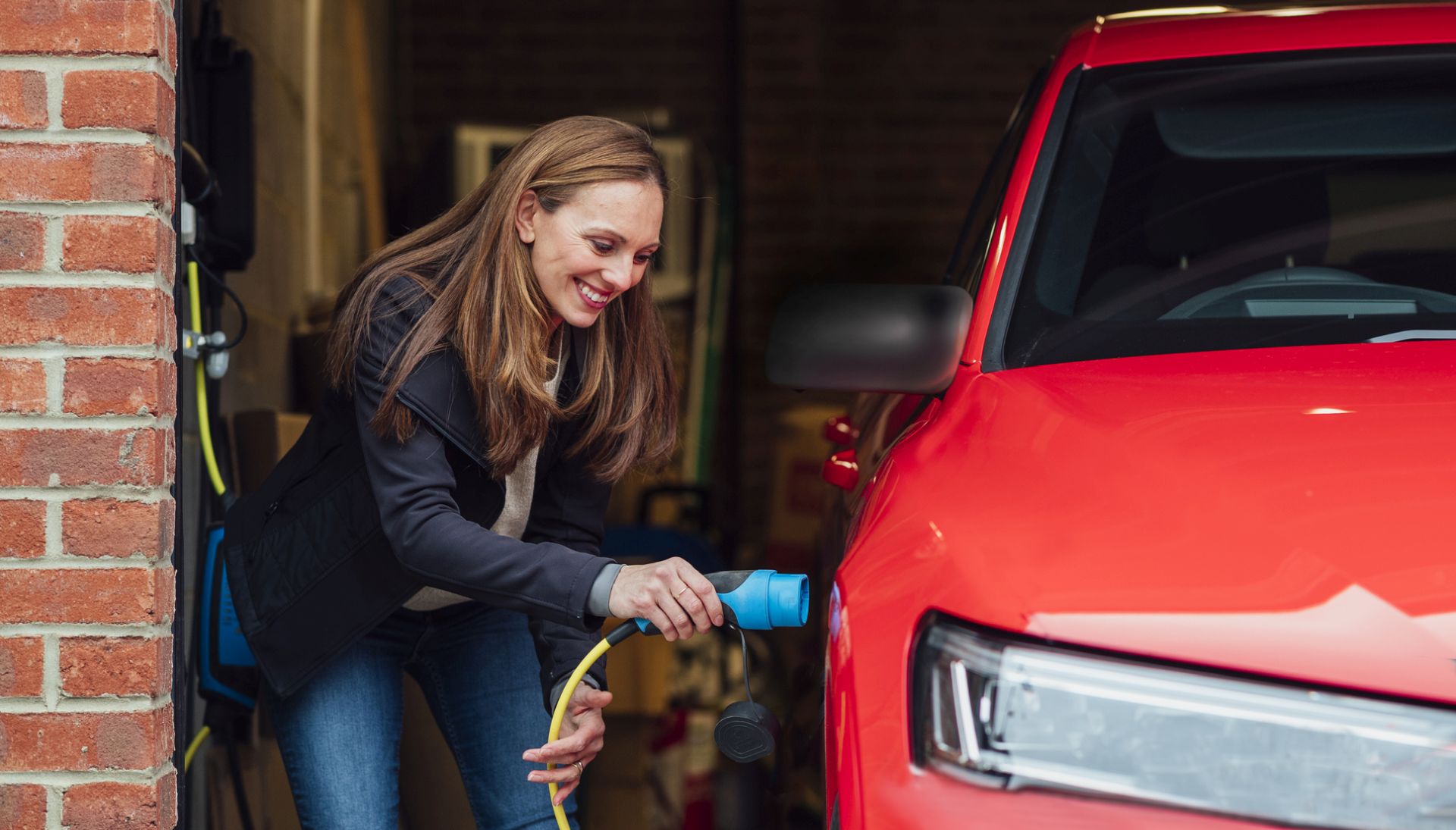Electric car charging: the difference between 1-phase and 3-phase
A 1-phase or 3-phase grid connection is critical to the power a charge point can deliver. This is especially important if you want to install a charging station at home or at work. To explain as simply as possible exactly what a 1-phase or 3-phase connection means, we’ll first zoom in on an electrical cable.
1-phase connection
There are two wires in the power cord of an electrical appliance: a brown or black wire for the supply of electricity (phase wire) and a blue wire for the drain (neutral wire).
However, there are three phase wires (3x230V) and a neutral wire in the power cable of the national electricity network underground. Except that in most homes, only one phase wire (1x230V) enters the meter box. Therefore, this is called a 1-phase connection.
If you have a single-phase connection and want to install a charging point for an electric car, that charging point can provide a charging capacity of up to 3.7 kW or 7.4 kW, depending on the ground fault circuit breaker in the meter box (16 or 32 amps).
3-phase connection
With a 3-phase connection, not one, but three phase wires enter the meter box (3x230V/400V). This allows a power of 11 kW or 22 kW to be sent to the charge point, depending on the earth leakage circuit breaker (16 or 32 amps). This therefore allows the battery of an electric car to be charged significantly faster compared to a single-phase connection.
A 3-phase connection is also colloquially known as three-phase power. Many modern homes and office buildings are already equipped with a 3-phase connection by default, or was retrofitted. Often for an induction cooktop in the kitchen, you also need a 3-phase connection.
READ ALSO: Electric car charging: everything you need to know
Weakest link determines
If you want to install a charging station at home or at work and make the best choice, there are a few things to consider.
- The battery capacity of the electric car (in kWh).
- With what maximum power the battery of the electric car can be charged (in kW).
- The minimum power the charge point must provide (in kW).
Suppose you have an electric car with a 66 kWh battery and an 11 kW on-board charger, the battery could theoretically be fully charged in 6 hours (66 kWh divided by 11 kW). But then the charge point must be able to deliver 11 kW. This requires a 3-phase connection in the meter box, and you must choose a charging point that can actually handle this power.
Keep in mind that the weakest link determines how fast an electric car’s battery ultimately recharges. Does the car’s on-board charger allow a charging capacity of up to 7.4 kW? Then the battery can never be charged with higher power. Not even if you have a charge point that delivers 11 kW.
The same the other way around: if the electric car has an onboard charger of 11 kW, but the charge point cannot supply more than, say, 7.4 kW, the battery will be charged with a maximum of 7.4 kW. Then it theoretically takes 8.9 hours (66 kWh divided by 7.4 kW) to fully charge the battery.
READ ALSO: What is the difference between AC and DC charging?
Choosing a charging point
So when choosing the right charging point, you first need to find out what the options are in terms of connection in the meter box, how fast the car can be charged and how fast you yourself want the battery to be charged. That makes finding the right charging point a lot easier. With all these charging stations of different brands, in different forms, with different charging capacities and with large price differences, otherwise it is impossible to see the forest for the trees.
Wondering what connection you have in your meter box? Look in the meter box to see if it says “3x230V/400V” on the electricity meter or check your utility bill which also says which connection you have.
Public charging points
Like all of Europe, the Dutch power grid uses the 3-phase system. So all public street charging points are already connected to the national 3-phase network by default. By far the majority of them provide a load capacity of 11 kW. There are also 22 kW charging points with two connections. Here, one car can charge with 22 kW or two simultaneously with 11 kW, if the car is suitable for such charging capacities.

